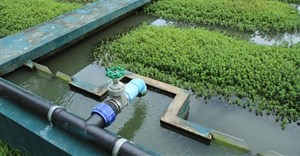
Subscribe & Follow
Finding solutions to disrupted Wi-Fi in the warehouse

What are some of the key benefits for incorporating Wi-Fi into warehousing operations?
Riaan Graham: Like any business, having connectivity and Wi-Fi can go a long way to not only streamline operations, but also increase productivity. In fact, connectivity via Wi-Fi will play a growing role in increasing efficiencies and productivity in warehouses across South Africa and Africa alike. Use of mobile devices such as smartphones and tablets in such environments continues to increase rapidly and to improve service efficiency, these environments should be looking at Wi-Fi to support line of business applications such as electronic systems that staff access using tablet devices to provide a more flexible way to take work.
There is a need to optimise container turnover worldwide – where logistics must ensure the efficient storage and retrieval of containers in a minimum timeframe – after all time is money. Exact positioning and tracking of all containers is, therefore, key. But to optimally do so, connectivity and reliable connectivity at that is essential. As such, having access to a reliable connection allows logistic managers to obtain and manage container, crane and vehicle information in real time, which significantly optimises the entire chain process. A loss in communication means for example, the position of cranes and vehicles cannot be tracked, vehicle/container data cannot be sent to the inventory management system and the operator cannot find the next container – as such, the entire process grinds to a halt.
Continuous tracking of all elements has proven to be the most effective solution and Wi-Fi has been proven to be the effective enabler.
Why is connectivity in warehouses such a problem?
Graham: Warehouses pose a huge challenge for connectivity. In fact, in large warehouses, getting wireless to function as it's supposed to can be next to impossible. Between huge areas filled with metal racks, a myriad of handheld Wi-Fi devices, moving vehicles, constantly changing environmental conditions, and no pervasive Ethernet network, connectivity is an enormous challenge.
What are some of the key challenges? What issues need to be addressed?
Graham: Each day, hundreds of thousands of kilograms of cargo pass through such transportation and warehousing hubs. Staff needs real-time access to gate, ticket and terminal/cargo information, and maps or other guidance as they pass through the terminal. These environments are very challenging from a wireless performance perspective. There is typically little or no existing networking infrastructure, and changes in user or cargo density over the course of the day can dramatically impact RF characteristics and demand load on the network. This often results in poor connections, low user satisfaction, and unacceptable network quality to support critical applications.
Essentially, it’s about getting reliable coverage to previously difficult to reach areas. This, therefore, results in less downtime, less management and support calls and ultimately more productivity.

What can be done to address these challenges? Are solutions to this available?
Graham: These challenges have to be addressed head on and as such, environmental scans need to be undertaken to ensure an accurate and relevant solutions is deployed that really takes the landscape and warehouse needs and requirements into account. There are solutions available and it important to look for the following:
• Carrier-grade Wi-Fi that provides longer-range signals that can be steered around obstacles and interference. Look for Wi-Fi that utilises long-range, high capacity directional beam forming and beam steering technology to ensure better connections even in the most difficult environments.
• Look for smart Wi-Fi access points, a sophisticated high-gain directional antenna system, which constantly focuses and directs Wi-Fi signals over the best performing paths. This is essential in hostile RF environments where obstacles, interference, and noise wreak havoc with wireless systems.
• Go for a solution that provides centralised control Wi-Fi wireless access – where indoor and outdoor access points are managed as a unified system.
• Also, remember more isn’t always better – in fact, it is usually worse. So look for a provider that can provide ubiquitous Wi-Fi coverage with fewer wireless access points, for lower CAPEX.
Can new solutions to the problem scale with warehousing operations and incorporate into future technologies that may be deployed in warehouses?
Graham: Most definitely, firstly our technology is based on open standards thus ensuring that we offer maximum interoperability. We believe that this flexibility allows us to easily adapt and ensures our customers have peace of mind when incorporating future warehouse technologies.
















